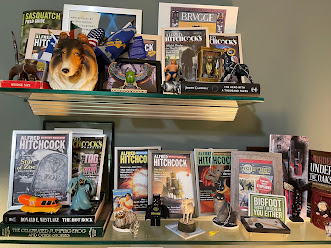My daughter and I were discussing the rise of antisemitism during the pandemic. She asked, “Why? What they’re saying makes no sense at all. And there are so few Jews, so why them?”
So, this is an article for my daughter and everyone who is simply perplexed about what antisemites are saying - because it has a history and that’s why it makes no sense, continues to exist and is dangerous.
During the plague outbreak in 1712, Hamburg forbade Jews from the city in an attempt to stop the plague and the cholera outbreak of the 19th century in Germany was also blamed on the Jews.
To discourage smallpox vaccines, anti-Semitic propaganda leaflets were distributed blaming them for the vaccine.
So, there’s a long history of both blaming Jews for diseases and blaming them for measures to stop diseases. We shouldn’t focus on the obvious lack of logic: it is the hatred evoked that matters.
Dr. Gavin Yamey has written poignantly on this issue, both in articles and on twitter. He has often outlined the perplexing mix of Jews both being blamed for the pandemic and for the vaccines and lockdowns.
In Australia, IKEA was, “defaced with the hateful words, “NO JEW JAB FOR OZ” while other “antisemitic posts are flourishing on many Australian anti-vaccine networks, including outright finger-pointing at Jews for creating and unleashing the virus.”
Like many students of psychology, I’ve studied the antisemitism of WW II, and there is a great deal of evidence tying authoritarian parenting and societies to antisemitism. However, this pandemic teaches us a crucial fact: the history of antisemitism, in all its lack of logic, is passed down in families and to others, so these patterns evoke emotions and make sense only to a twisted mind of an antisemite.
Which brings me to my daughter’s point, “There are so few Jews.”
Indeed there are.
In Canada, a country that prides itself on tolerance and lack of bigotry, “Jewish Canadians are the most targeted religious group for hate crimes…those numbers are particularly troubling since the Jewish community accounts for only 1% of the population and yet are the targets of 17% of police-reported hate crime.”
"As of 2021, the world's "core" Jewish population (those identifying as Jews above all else) was estimated at 15.2 million, or 0.19% of the 7.89 billion worldwide population.”
So why have so few shouldered so much hatred? The answer is complicated and certainly I would be remiss if I didn’t point out that there are excellent resources on the subject that discuss family and societal factors that we should all know.
However, these strange patterns - such as being blamed for making a disease worse and also for any measures to make it better - are history being repeated, literally. They make no sense. However, we should all learn these patterns so we can watch for them, know them and help in any way we can. We should also explain to our children the inexplicable: how the twisted minds of antisemites have passed these patterns down through centuries to place an immense burden of hate on such a small group.
For us, these incoherent statements merely perplex us, while to the antisemite they evoke hatred. And that hatred often translates into action.
An annual report by Tel Aviv University's researchers on anti-Semitism shows that online antisemitism has risen, as have desecrations of Jewish cemeteries, memorials and synagogues. They also warn that, while in person hate crimes have decreased as a result of the lockdowns, there is every indication that they will increase when lockdowns are reduced.
For children who haven’t learned these patterns and have no hatred to muster against Jews, leaving them perplexed by incoherent and strange statements by antisemites isn’t enough. We should explain the history of these patterns and that, when they reemerge, it harkens a dangerous time for Jews. Our children need to know that and do everything they can to help, because when we are long gone, that will be their job.




































